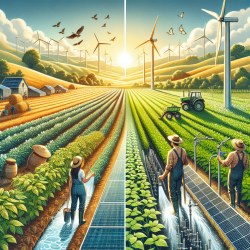Introduction
Water scarcity is a growing concern worldwide, with agriculture being one of the most water-intensive sectors, accounting for nearly 70% of freshwater withdrawals. As the global population continues to rise, the demand for freshwater in agriculture is expected to increase, exacerbating the scarcity issue. A recent review article, "Water scarcity in agriculture: An overview of causes, impacts and approaches for reducing the risks," provides valuable insights into the causes of water scarcity and offers practical solutions for mitigating its impacts. This blog explores how practitioners can leverage these insights to improve agricultural practices and promote sustainable water use.
Understanding Water Scarcity in Agriculture
The article highlights two primary types of water scarcity: physical and economic. Physical water scarcity occurs when water demand exceeds the available supply, while economic water scarcity arises when water is available, but access is limited due to inadequate infrastructure or institutional capacity. Both types pose significant challenges to agricultural productivity and sustainability.
Implementing Sustainable Practices
To address water scarcity, the article emphasizes the importance of adopting sustainable agricultural practices. These include:
- Improving Irrigation Technologies: Upgrading to efficient irrigation systems, such as drip or sprinkler irrigation, can significantly reduce water wastage.
- Utilizing Solar-Powered Desalination: Solar-powered reverse osmosis systems can convert saline water into irrigation water, reducing reliance on freshwater sources.
- Adopting Water Footprint Assessment (WFA): WFA methodologies help quantify water consumption and identify areas for improvement in water management.
Encouraging Further Research
The article also underscores the need for continued research to develop innovative solutions for water scarcity. Practitioners are encouraged to engage with ongoing research efforts and contribute to the development of new strategies for sustainable water use in agriculture.
Conclusion
By implementing the strategies outlined in the research, practitioners can play a crucial role in mitigating water scarcity in agriculture. These efforts not only contribute to more sustainable agricultural practices but also help ensure the availability of water resources for future generations. To delve deeper into the research and explore the detailed findings, practitioners are encouraged to read the original article.
To read the original research paper, please follow this link: Water scarcity in agriculture: An overview of causes, impacts and approaches for reducing the risks.










